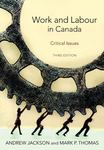We don’t actively support Internet Explorer
It appears that you are using Internet Explorer, which has been discontinued by Microsoft. Support has ended for versions older than 11, and as a result you may face security issues and other problems when using it.
We recommend upgrading to a newer browser such as Firefox, Google Chrome, or Edge for a much better experience across the web.
While this site may work with Explorer, we are not testing and verifying it, so you may run into some trouble or strange looking things.

Subjects
Labour Studies / Professional Practice / Social Work / Sociology / Sociology of Work and LabourJuly 2014
Print ISBN: 9781551305714
Overview
In this book, contributing scholars, practitioners, and researchers offer their practice experience and findings related to creating workplace wellness with emphases on the intellectual, vocational, physical, social, psychological, and spiritual needs of workers and the structures and policies within their workplaces.
The first section of the book, “The Hazardous Workplace,” addresses the stressful workplace, workplace violence, bullying, and counselling in an environment where stress is high and work entails more than the usual amount of risk. “Workplace Responses,” the second section, examines the history of occupational assistance, several models of employee assistance practice, the workplace management of dis/abilities, complications around drug testing on the job, the relevance of spirituality to the workplace, an Aboriginal perspective on work, and an evaluative mechanism for occupational programming.
Intake and assessment, crisis intervention, critical incident stress management, brief treatment, counselling employees suffering from depression or experiencing grief, and the role of mediation inside and outside of the workplace are explored in the third section, entitled “Practice to Create Well Workplace.” And finally, four Case Studies comprise the final section, spanning the country while representing five very different work sites, including a child welfare organization in Ontario, the workforce of the University of Saskatchewan, a Canadian public sector employee assistance program, and a religious site where occupational assistance has been applied to a church community.
Table of Contents
Introduction
Acknowledgements
Part I: The Hazardous Workplace
Chapter 1: The Stressful Workplace, Rick Csiernik
Chapter 2: Workplace Violence, Derek Chechak and Rick Csiernik
Chapter 3: Workplace Bullying: A Canadian Perspective, Raymond T. Lee and Brenda L. Lovell
Chapter 4: The Hazards of Being a Counsellor for the Hazardous Workplace, Kristi Darnell and Rick Csiernik
Part II: Workplace Responses
Chapter 5: From Welfare Capitalism to Workplace Wellness: A History of Occupational Assistance, Rick Csiernik
Chapter 6: Wellness and the Workplace: Creating an Integrated Model of Occupational Assistance, Rick Csiernik and Derek Chechak
Chapter 7: An Overview of Canadian Employee Assistance Programming, Rick Csiernik and Alex Csiernik
Chapter 8: Disability Management in the Canadian Context, Tony Fasulo, Sara Martel, and Alex Csiernik
Chapter 9: Drug Testing in the Workplace: Issues, Answers, and the Canadian Perspective, Scott Macdonald and Kimberly Sharpe
Chapter 10: Spirituality and the Workplace, David W. Adams and Rick Csiernik
Chapter 11: An Aboriginal Perspective on the Workplace and Wellness, Kelly Brownbill
Chapter 12: Evaluating Occupational Programs, Rick Csiernik, David A. Sharar, and Richard D. Lennox
Part III: Practice to Create a Well Workplace
Chapter 13: Intake and Assessment in the Workplace Context, Jodi Jacobson Frey and Jennifer B. Pastoor
Chapter 14: Crisis Intervention in the Workplace Context, Susan Alexander
Chapter 15: Critical Incident Stress Management, Dermot Hurley, Sandy Ferreira, Melissa Brideau, and Claire Pain
Chapter 16: Brief Treatment in the Workplace Context, Wayne Skinner
Chapter 17: Depression and the Workplace, Louise Hartley, Alix Gordon-Moran, and Rick
Csiernik
Chapter 18: Responding to Grief in the Workplace, Hilda Sabadash and Kate McKeon
Chapter 19: The Role of Mediation Inside and Outside of the Workplace, Rachel Birnbaum and David W. Adams
Part IV: Case Studies
Chapter 20: Keeping New Hires Well: An Example from Child Welfare, Rick Csiernik, Carrie Smith, Jennifer Dewar, Laura Dromgole, and Arlene O’Neill
Chapter 21: Change, Evolution, and Adaptation: The University of Saskatchewan Experience, Rick Csiernik, Dave Hannah, and Jim Pender
Chapter 22: A Process Evaluation of a Canadian Public Sector Employee Assistance Program, Rick Csiernik, Paul Chaulk, and Steve McQuaid
Chapter 23: The Congregational Assistance Program: Bringing Occupational Assistance to Faith Communities, Rick Csiernik, Mark Vander Vennen, Marg Smit-Vandezande, and Ken Van Wyk
Contributing Authors
Index
Copyright Acknowledgements




